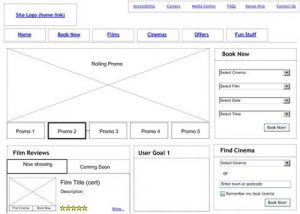 Nearly seven out of ten online consumers abandon their shopping carts, reports the Baymard Institute, which aggregated eCommerce cart abandonment rate studies to reach this figure. Depending on the time of year, Listrak’s Shopping Cart Abandonment Index can spike as high as 83 percent, with the six-month average abandonment rate for late 2015 hovering at 75 percent. Ecommerce cart abandonment is a serious, pervasive problem across all industries. Understanding the reasons for shopping cart abandonment are essential to bringing customers back to your site to complete their purchase and stopping the abandonment in the first place.
Nearly seven out of ten online consumers abandon their shopping carts, reports the Baymard Institute, which aggregated eCommerce cart abandonment rate studies to reach this figure. Depending on the time of year, Listrak’s Shopping Cart Abandonment Index can spike as high as 83 percent, with the six-month average abandonment rate for late 2015 hovering at 75 percent. Ecommerce cart abandonment is a serious, pervasive problem across all industries. Understanding the reasons for shopping cart abandonment are essential to bringing customers back to your site to complete their purchase and stopping the abandonment in the first place.
Reasons For Shopping Cart Abandonment
Wondering why customers don’t convert? Consider the abandonment process from their perspective: they put time and energy into searching for a product, selecting your website from search results, and then selecting one or more items to purchase. But something stopped them from completing the purchase. So what went wrong? More than half of all customers cite “unexpected costs” as the top reason for cart abandonment, says Kissmetrics. More than a third list other cost-related issues as a concern, with 36 percent saying they “found a better price elsewhere” and 32 percent stating that the price was simply “too expensive”.
1. Shopping Cart Abandonment Best Practice: No Hidden Shipping Costs
- Offer flat rate or free shipping
- Clearly share minimum free shipping threshold upfront
- Display extra fees upfront
Thanks to the proliferation of Amazon Prime, online shoppers expect free shipping. Think you can’t afford to offer free shipping? This study suggests you probably can. In fact, TechCrunch argues that free shipping is a major incentive for shoppers to buy more. Orders with free shipping are 30 percent higher in value. The minimal amount you do lose on the shipping charges may be more than made up for with extra sales– not to mention avoiding the loss of your customer to a free shipping competitor.
If you do need to charge shipping, then reveal the cost upfront. If there’s an extra shipping fee associated with a product (like heavy furniture), include this information on the product page. Don’t wait until the end of the process to drop a shipping cost “surprise” on shoppers. Either offer a minimum purchase threshold to qualify for free shipping, or calculate shipping costs as you go. Doing so frames cost expectations from the beginning, minimizing shopping cart abandonment.
2. Shopping Cart Abandonment Best Practice: Streamlined Checkout
- Eliminate sign-in barriers
- Make the checkout process 3 to 5 steps
- Use clear progress indicators
Next, think through the checkout process. Are you making customers jump through extra hoops to complete a purchase? Stop. When a checkout form goes on forever or a website requires mandatory registration, people abandon their carts. Difficult checkout procedures – requiring too much information, a lack of guest checkout options, and a complex check out process – are responsible for nearly half of all shopping cart abandonments, reports SavvyPanda. Failure to display a visitor’s progress during the checkout process can leave shoppers confused about how long the process will take and more likely to abandon their carts. Lengthy submission forms requiring unnecessary information create more opportunities for errors. All of these problems can be rectified with a streamlined checkout.
Case in point: furniture retailer West Elm offers an easy, streamlined checkout process. The first step prompts customers to either sign in to an account or continue the checkout process as a guest. Customers can also opt to sign in with social media accounts, and West Elm includes a trust-building reminder that the company will never post anything to the customer’s account; it’s simply one less password to remember. The clutter-free design here is just as important as the dual checkout options. Large social media icons make it easy to quickly identify alternate sign-in options, and West Elm prominently features an alternative “No, I don’t have an account” checkout option.

Next, shoppers are guided through a four-step checkout process, with a progress bar at the top clearly showing shoppers where they are in the process. Easy-to-use input forms ask for only the necessary information. The checkout form also anticipates potential problems (like difficulty with an address) and provides an immediate option for assistance. Throughout the process the merchandise total is visible on the right side of the page, with an option to toggle on/off a full merchandise listing. Any missed or incorrectly entered fields are shaded in attention grabbing pink, immediately bringing the issue to the shopper’s notice.

3. Shopping Cart Abandonment Best Practice: Email Retargeting
- Send email within 12 hours after shopping cart abandonment
- Retarget with ads the eliminate purchase barriers, like a free shipping offer
All is not lost when customers abandon their carts. Just as email marketing is the most effective strategy to get customers to your website in the first place, email retargeting the most effective way to bring these customers back. Retargeting uses cookies embedded in email messages to display your ads as a potential customer browses the web. You can serve ads to anyone who visits your website, people who spend time browsing specific product pages, or people who abandon their shopping carts.
While retargeted ads are highly effective at all stages of the search funnel, they are especially important for converting more shoppers on the brink of making a purchase. Retarget your customers with ads that eliminate common purchase barriers. For example, with a segmented retargeting campaign, shoppers might see an ad for free shipping on orders over a certain price point.
Don’t wait too long to send the email. Research shows that the first 12 hours are the “golden window” for regaining lost customers, reports Kissmetrics. Up to 65 percent of customers will make a purchase within 3 to 12 hours after abandoning their cart. Be sure they’re purchasing from your business.
Conclusion
Without an ecommerce cart recovery program in place, your company could be missing out on significant sales. Understand the reasons for ecommerce cart abandonment, like shipping costs and confusing checkout processes, and take steps to eliminate these barriers to purchase. Finally, think of email retargeting as just another piece of the sales funnel. With a smart retargeting campaign in place, your business will be well positioned to bring customers back to complete the purchase.
Digital & Social Articles on Business 2 Community(100)
Report Post



